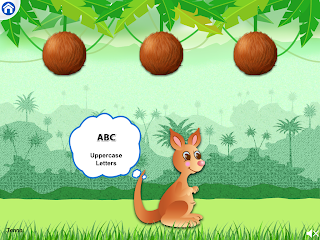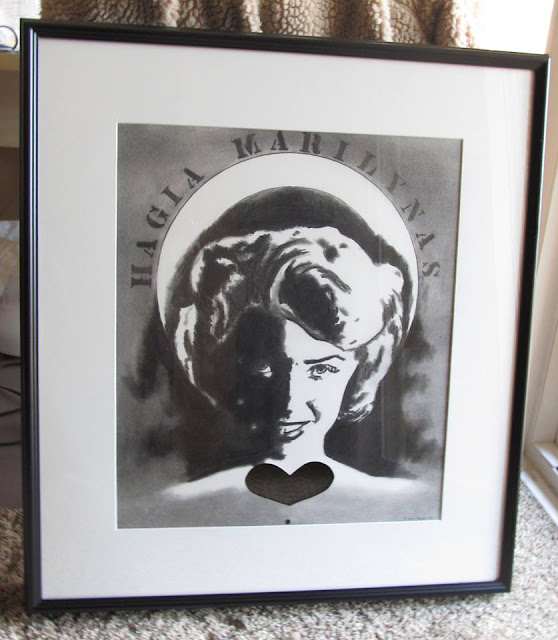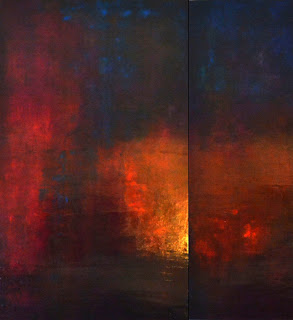A group of kids are building a train track around the carpet. 3 kids are adding to the track, but little Jack is facing the wall stacking his track pieces in a pile to see how high he can get it. Jack's friends are not happy because they can't finish their track without all the pieces.
Ellie interrupts constantly at circle time and answers every question the teacher poses.
A group of 3 five year olds are playing in dramatic play. Each student is playing Mom, Dad and Baby. 'Mom' is cleaning the kitchen and 'Dad' is mowing the lawn. The little girl playing 'Baby' says, 'Hey Dad, I raked the leaves.' The other two kids turn and say "Hey! You're Baby you can't rake!"
Social skills can often be difficult to build in preschool students. Most special education classrooms are filled with SLPs, OTs, PTs, Intervention Specialists and paraprofessionals working on social skills in individual sessions, small group work and whole group. Social skills permeate all areas of the curriculum and having a consistant curriculum and vocabulary across the preschool day gives each specialists the ability to provided consistant instruction. The key is having a program that consistently builds on the concepts and vocabulary.
At the end of the spring I was contacted by the Social Thinking company. If you've purchased any of my social activities, you can tell I'm a fan of Michelle Garcia Winner's work. I regularly use their curriculum with my elementary aged students and was really excited to test out their new preschool curriculum, The Incredible Flexible You.
The program uses same terminology and philosophy as the programs for older students, but in language and scenarios more appropriate for their age.
The program uses same terminology and philosophy as the programs for older students, but in language and scenarios more appropriate for their age.
Back in the Fall at a local schools conference I attended a session, by Nancy Tarshis, MA, MS, CCC-SLP, about a this new curriculum, that wasn't even on the market yet. The Incredible Flexible You is a two part series that includes lesson plans, activities and music for preschool and early elementary aged students.
The basis of the program are 10 story books. They each feature four characters (Jessie, Ellie, Evan, and Molly) who experience social interactions in various settings. The problems and environments will be familiar to your students, making it easy to draw connections.
Volume 1 features 5 story books and curriculum for the following social skills: Thinking Thoughts and Feeling Feelings, The Group Plan, Thinking with Your Eyes, Body in the Group and Whole Body Listening.
The program doesn't stop at just a book for teaching social skills. Each lesson is laid out with instruction to teach social thinking. Unlike teaching a specific social skill, social thinking is not expecting learning for mastery. Social learning is something we do all over our lifespan. When we teach the different concepts and how they go together we are teaching our students how the nuerotypical brain learns social information intuitively.
To use the program, start with introducing the vocabulary using The Incredible Flexible You Storybook for that lesson. For example, let's use the lesson: The Group Plan. Read the curriculum information including the definition and the reason for teaching the concept.
Prepare the activities (an apple game, obstacle course, egg game, and cooking items). Start by reading the story to your group. Stop at each point in the book where you see a 'teaching moment' indicated by the icon. Use the lesson plan to help you identify all the teachable moments. During circle time I also used the accompanying music. It made a nice interactive moment for all the students, even the ones who were a bit young for the lesson.
After you read the book you can use some of the structured activities you prepared in advance to reinforce the concepts. I didn't have time to cut out these apples for the lesson, so I just used the ones from my Attribute Apples Box.
Next use the ideas listed to facilitate dramatic play that incorporates the skills discussed in the lesson. The lesson plan guide even lists easy ways to incorporate the vocabulary into the classroom. For example, " Jenna is following the plan and sitting in the circle."
Send home the family letter to encourage carryover and consistency of the program.
Pros: The philosophy of teaching social thinkings, instead of isolated social skills is fantastic. I have needed a social curriculum that matches my elementary programs for consistency. I appreciate that the book give specific details for teaching moments, extension activities and carryover. This is an excellent way to help those who are not SLPs use to the program with ease and therefore 'buy-in' to the program. I love that I've been able to use it with my K and first graders too!
Cons: I work in an integrated program, meaning I have children of many different levels. The program is designed for more high functioning students with 'average to way above average language and learning ability'. While it's a wonderful program for some of my students its not one size fits all. I'd love to see another program developed to accompany TIFY that addressed those more foundational skills in a systematic way.
I guess the true test of any product I review is, "would you recommend it to your SLP friends?" Last week at our preschool meeting I brought in my copies for everyone to look at and The Incredible Flexible You program got added to our product orders for next year! I'd say that explains how I feel about it! This is one product you don't want to miss!
The Incredible Flexible You is available on the Social Thinking website. Version 1 retails for $99.50 including the music.
The fine print: This product was provided by Social Thinking for Review. No other compensation was provided and the opinions expressed are solely mine.
The basis of the program are 10 story books. They each feature four characters (Jessie, Ellie, Evan, and Molly) who experience social interactions in various settings. The problems and environments will be familiar to your students, making it easy to draw connections.
Volume 1 features 5 story books and curriculum for the following social skills: Thinking Thoughts and Feeling Feelings, The Group Plan, Thinking with Your Eyes, Body in the Group and Whole Body Listening.
The program doesn't stop at just a book for teaching social skills. Each lesson is laid out with instruction to teach social thinking. Unlike teaching a specific social skill, social thinking is not expecting learning for mastery. Social learning is something we do all over our lifespan. When we teach the different concepts and how they go together we are teaching our students how the nuerotypical brain learns social information intuitively.
To use the program, start with introducing the vocabulary using The Incredible Flexible You Storybook for that lesson. For example, let's use the lesson: The Group Plan. Read the curriculum information including the definition and the reason for teaching the concept.
Prepare the activities (an apple game, obstacle course, egg game, and cooking items). Start by reading the story to your group. Stop at each point in the book where you see a 'teaching moment' indicated by the icon. Use the lesson plan to help you identify all the teachable moments. During circle time I also used the accompanying music. It made a nice interactive moment for all the students, even the ones who were a bit young for the lesson.
After you read the book you can use some of the structured activities you prepared in advance to reinforce the concepts. I didn't have time to cut out these apples for the lesson, so I just used the ones from my Attribute Apples Box.
Next use the ideas listed to facilitate dramatic play that incorporates the skills discussed in the lesson. The lesson plan guide even lists easy ways to incorporate the vocabulary into the classroom. For example, " Jenna is following the plan and sitting in the circle."
Send home the family letter to encourage carryover and consistency of the program.
Pros: The philosophy of teaching social thinkings, instead of isolated social skills is fantastic. I have needed a social curriculum that matches my elementary programs for consistency. I appreciate that the book give specific details for teaching moments, extension activities and carryover. This is an excellent way to help those who are not SLPs use to the program with ease and therefore 'buy-in' to the program. I love that I've been able to use it with my K and first graders too!
Cons: I work in an integrated program, meaning I have children of many different levels. The program is designed for more high functioning students with 'average to way above average language and learning ability'. While it's a wonderful program for some of my students its not one size fits all. I'd love to see another program developed to accompany TIFY that addressed those more foundational skills in a systematic way.
I guess the true test of any product I review is, "would you recommend it to your SLP friends?" Last week at our preschool meeting I brought in my copies for everyone to look at and The Incredible Flexible You program got added to our product orders for next year! I'd say that explains how I feel about it! This is one product you don't want to miss!
The Incredible Flexible You is available on the Social Thinking website. Version 1 retails for $99.50 including the music.
The fine print: This product was provided by Social Thinking for Review. No other compensation was provided and the opinions expressed are solely mine.












































